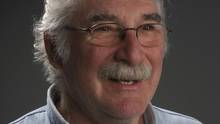Efficacy of Chiropractic Manual Therapy on Infant Colic: A Pragmatic Single-Blind, Randomized Controlled Trial
Efficacy of Chiropractic Manual Therapy on Infant Colic: A Pragmatic Single-Blind, Randomized Controlled Trial
SOURCE: J Manipulative Physiol Ther. 2012 (Oct); 35 (8): 600–607
Joyce E. Miller, BS, DC, David Newell, PhD, and
Jennifer E. Bolton, PhD
Associate Professor,
Anglo-European College of Chiropractic,
Bournemouth, UK.
jmiller@aecc.ac.uk.
| Dr. Miller wrote a follow-up to this study, a cost comparison of the medical and chiropractic care provided in her earlier RTC study, titled:
Costs of Routine Care For Infant Colic in the UK and Costs of Chiropractic Manual Therapy as a Management Strategy Alongside a RCT For This Condition This RTC cast new and significant insights into previous colic trials:
|
OBJECTIVE: The purpose of this study was to determine the efficacy of chiropractic manual therapy for infants with unexplained crying behavior and if there was any effect of parental reporting bias.
METHODS: Infants with unexplained persistent crying (infant colic) were recruited between October 2007 and November 2009 at a chiropractic teaching clinic in the United Kingdom. Infants younger than 8 weeks were randomized to 1 of 3 groups: (i) infant treated, parent aware; (ii) infant treated, parent unaware; and (iii) infant not treated, parent unaware. The primary outcome was a daily crying diary completed by parents over a period of 10 days. Treatments were pragmatic, individualized to examination findings, and consisted of chiropractic manual therapy of the spine. Analysis of covariance was used to investigate differences between groups.
RESULTS: One hundred four patients were randomized. In parents blinded to treatment allocation, using 2 or less hours of crying per day to determine a clinically significant improvement in crying time, the increased odds of improvement in treated infants compared with those not receiving treatment were statistically significant at day 8 (adjusted odds ratio [OR], 8.1; 95% confidence interval [CI], 1.4-45.0) and at day 10 (adjusted OR, 11.8; 95% CI, 2.1-68.3). The number needed to treat was 3. In contrast, the odds of improvement in treated infants were not significantly different in blinded compared with nonblinded parents (adjusted ORs, 0.7 [95% CI, 0.2-2.0] and 0.5 [95% CI, 0.1-1.6] at days 8 and 10, respectively).
CONCLUSIONS: In this study, chiropractic manual therapy improved crying behavior in infants with colic. The findings showed that knowledge of treatment by the parent did not appear to contribute to the observed treatment effects in this study. Thus, it is unlikely that observed treatment effect is due to bias on the part of the reporting parent.
Introduction
Excessive infant crying in otherwise healthy infants, traditionally called infant colic, continues to be an enigmatic condition with no known cause and no known cure. [1-3] Afflicting between 10% to 30% of all infants and consuming significant health care resources, [2] infant colic is a problem for parents and clinicians, both of whom try a wide range of therapies with often disappointing results.
You may review the earlier Colic studies at:
The Infantile Colic and Chiropractic Page
and you may also enjoy our
Despite decades of research, a clear pathogenesis has not been elucidated. Notwithstanding, what is clear is that underlying disease is rare in the excessively crying baby [4] and that half of those affected recover by 6 months of age, [5] with a small proportion at risk of injury [6] or long-term developmental problems. [7-9] In an effort to help their child with what appears to be a painful condition, some parents choose complementary and alternative medicine (CAM), including chiropractic manual therapy. [9-12] To date, several randomized trials have been reported, [13-19] and although these trials demonstrate some reduction in crying, weaknesses in study methodologies have compromised their contribution to the evidence base. [20-23]

